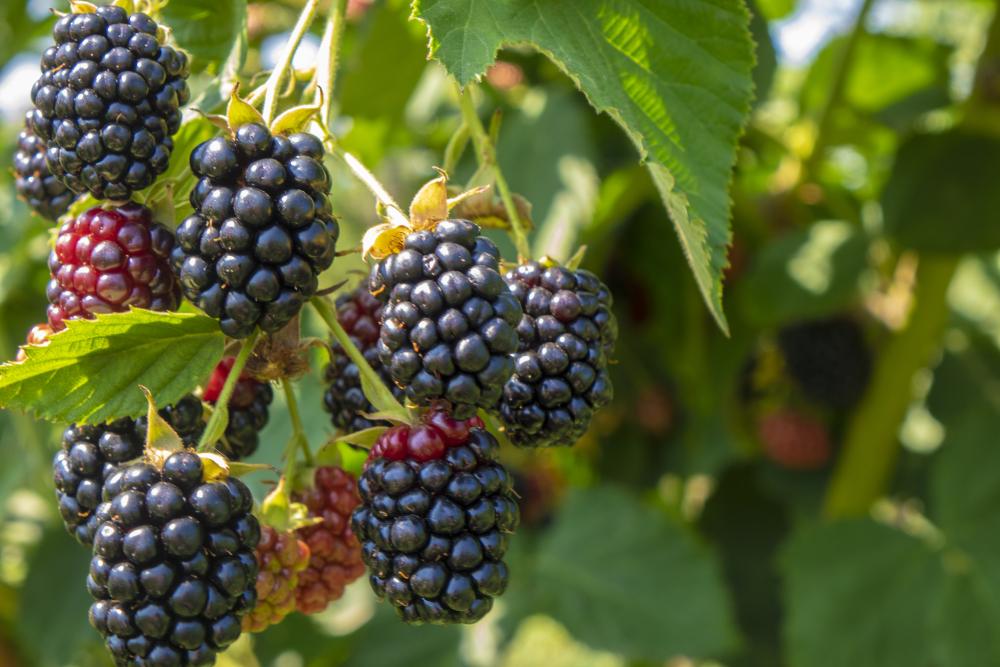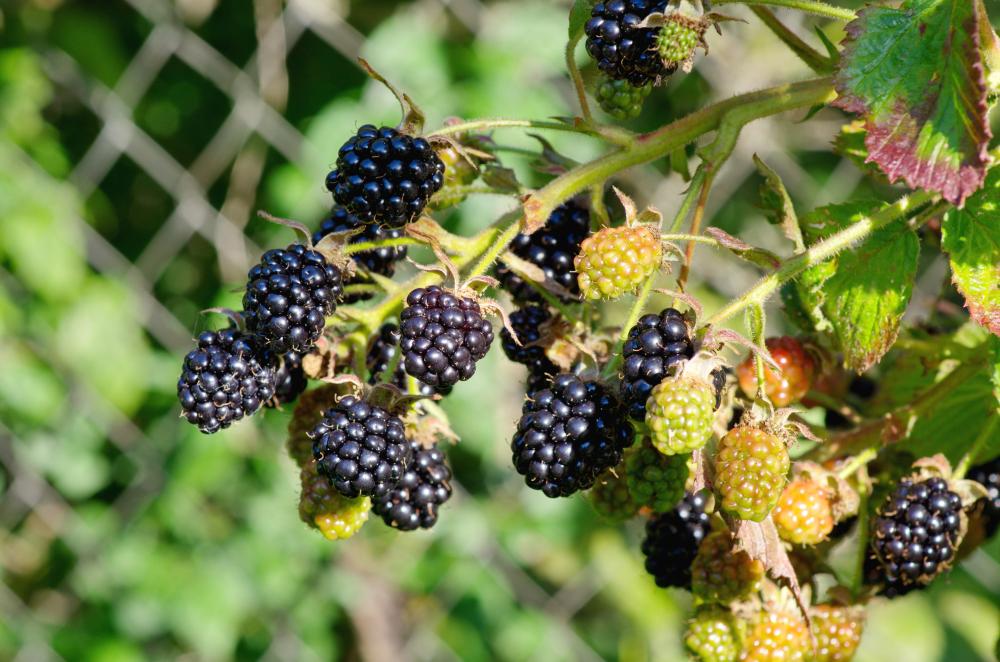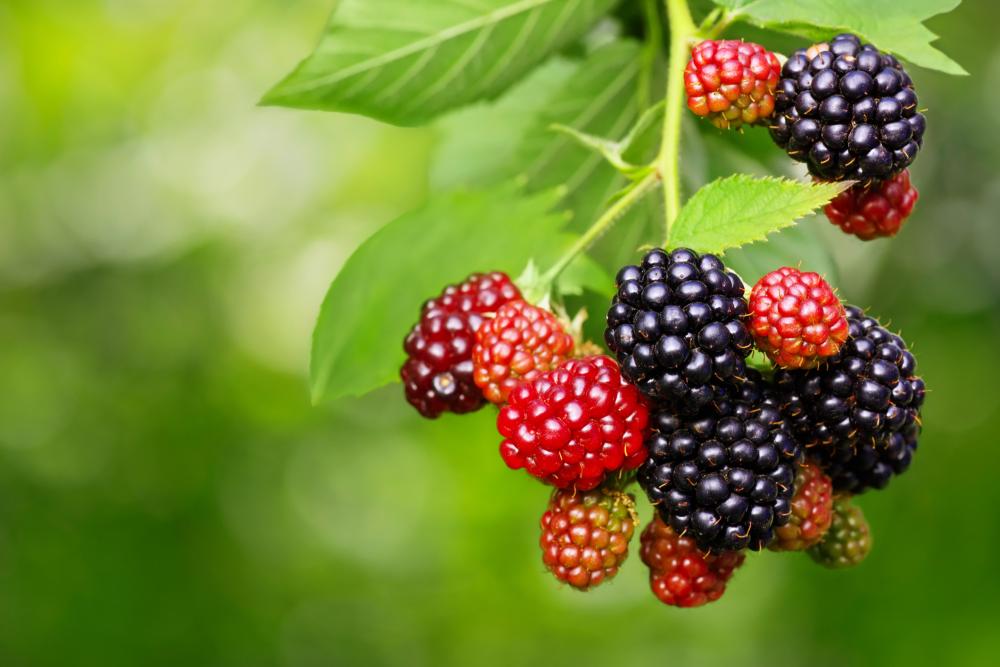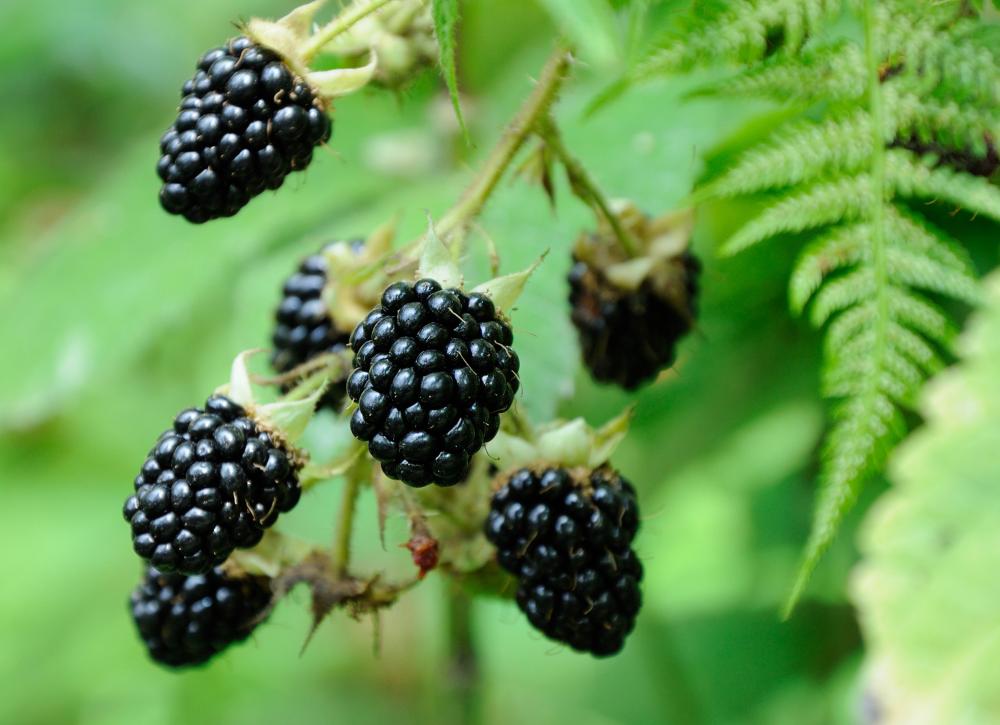Blackberry Growing Problems: How to Fix All Issues
Whether you consider the blackberry as a superfood or just another berry with a unique color to garnish your ice cream, pies, and dessert, it still deserves its place in your garden. And, yes, a lot can be said about blackberry growing problems and the amount of work you need to put into growing and caring for it. But when you pick a fresh ripe berry off your blackberry bush, the sense of accomplishment is undeniable.
So what kind of problems can you expect when growing the blackberry? Well, for starters, you might not have any berries at all, or the berries will not ripen. Sometimes the blackberries will rot right on the vine, and other times, the bush gets infected with diseases. This article summarizes the most common blackberry growing problems and offers different ways and tactics to solve these problems.
No Blackberries
It’s no secret that planting a blackberry bush in your garden is not an easy task. It takes a lot of care just to get the seedling off the ground. As you watch it grow and spread its lush green foliage, you can almost taste the tarty fruits when the time comes to harvest. So when no berries grow on the bush, you might think you’re not as good a gardener as you might have thought.
But for the most part, it’s not your fault when no berries develop on the blackberry vine. The reasons are varied and have to do with pathogens, fungal spores, and even pests. Sometimes the growing conditions contribute to the problem, but they rarely are the single cause.
How to Fix it
To say that making sure that your blackberry vine will bear fruits and those fruits will ripen is a constant struggle against nature and natural predators is putting it mildly. You’ll have to stay vigilant and keep a close eye on the leaves, flowers, and stems for any signs of disease or stress. Here are the main causes of the blackberry not bearing fruit and what you can do about each one.
- Pests: Pests are often easy to spot, no matter how clever at hiding they are. Even tiny insects like aphids will leave behind a trail of small spots on the leaves. But it’s not aphids you should worry about. Rather, it’s the raspberry fruitworm beetles, mites, and thrips. They can wreak havoc with the plant’s health and lead to a lack of fruiting. Spray the pests with neem oil and avoid using inorganic pesticides, which could kill useful insects that pollinate the blackberry.
- Viruses: Unfortunately, many viruses attack the blackberry vine and interfere with the plant’s ability to produce fruits. The list of viruses is long, but the most common pathogens are Black Raspberry Streak, Blackberry Calico, Raspberry Bushy Dwarf, and Blackberry Tobacco Streak. Make sure you use virus-free seeds and don’t plant the blackberry bushes near wild blackberry brambles. Remove infected plants and dispose of them safely.
- Growing Conditions: Lack of pollinators can result in poor or no harvest that year. So ensure you attract bees and butterflies to the garden to pollinate the blackberry flowers. The bush thrives in rich soil, so make sure to mix in plenty of organic materials before planting the seeds.
- Fungus: Anthracnose is a serious fungal infection that might prevent the blackberry from carrying fruits, or if it does, the fruits will wilt and wither before they become ripe. There’s a whole section about Anthracnose below and what you can do about it.
Blackberries Not Ripening
Even when the flowers of the blackberry have been pollinated and the berries start to develop, there’s still some way to go before the blackberries are on your plate. One problem that often occurs is when the blackberries will not ripen. They look healthy, the right shape and size. But no matter how long they stay on the bush, they will stay hard and taste bitter. So what went wrong?
In this case, there’s only one culprit. It’s the redberry mite. Small as the pest is, it can damage a whole crop and keep the berries on several blackberry vines from ripening.
How to Fix it
To understand how to combat the mighty redberry mite, you need to understand how it prevents your berries from getting ripe. The tiny insect is hard to detect with the naked eye, but you can see its effects. It will inject the berry before it gets ripe, which causes some red drupelets to form on the flesh of the berry. One injection is enough to keep the berry from turning sweet.
Not only that, but once the redberry mite infects a vine, it will stick around throughout the winter to ruin the next season’s harvest as well. So what can you do about this super mite?
You can apply sulfur to the soil every two weeks from the time the first spring growth emerges until harvest time. Once the berries have turned black and are starting to ripen, you can hold off the sulfur treatment.
Another solution is to use horticultural oil. About four applications throughout the season are enough. Space them out at 3 weeks intervals to keep the redberry mite away.
Blackberries Are Rotting
Perhaps nothing is more disheartening for a blackberry gardener than checking on the berries one morning to find them rotting. The fungus responsible for blackberry fruit rot is Botrytis cinerea. A sneaky pathogen that takes over the whole plant, not just the fruits. That means your blackberry vine is susceptible to the fungus at different times of the year. It can attack the bush when the flowers are in full bloom or when the berries are fully developed.
And like many persistent pathogens, Botrytis cinerea hangs around in the garden long after the blackberry vine has gone dormant. During the winter, it lives on debris and waits for the spring to get active again.
How to Fix it
Botrytis cinerea thrives in humid conditions and is more likely to infect the vines after rainfall or when air circulation is poor. And although you can treat it and mitigate its damage on the blackberries, it will keep coming back the next season. So it’s better to prevent it from reaching your garden. Here are some ways to minimize the risk of the fungus.
- Plant your blackberry vines in a sunny spot that gets about 6 hours of full sun during the growing season.
- The soil needs to be well-drained. Heavy soil retains water which is fertile ground for the fungus. Amend the soil to make it loamy or sandy.
- Insulate the fruits of the blackberry and keep them off the soil. You can use mulching to protect them.
- Keep the garden clean and remove weeds regularly since they invite pests that carry the fungal spores.
- Harvest the berries as soon as they’re ripe. Overripe blackberries are more prone to fungal infections.
Blackberry Orange Rust
Another fungal infection you need to be wary of is the black orange rust. It’s a difficult disease to eradicate since the fungus will remain in the vine for the rest of its natural life. The fungus spores spread easily through the air, water, or contaminated gardening tools. So how would you recognize the signs of the infections?
At first, you’ll notice some discoloring of the leaves of the blackberry vine. New shoots will turn yellow as soon as they emerge, and the vine looks wilted and unhealthy. As the infestation spreads, the canes become twisted and deformed. Finally, orange blisters appear on the leaves, not getting enough light. This can interfere with the vine’s ability to produce fruits.
These orange blisters are, in fact sacs of spores that will explode and spread more spores to infect surrounding plants and ensure that the blackberry bush will carry the disease year after year.
How to Fix it
Since blackberry orange rust is a lifelong infection, it’s prudent to remove infected bushes as soon as you detect the early signs of the disease. This can mitigate the spread of the fungus spores and keep other vines safe.
It’s also recommended to rotate blackberry bush planting every 4 to 5 years. That’s how long the fungus spores stay in the soil.
Sanitize all gardening tools before and after using or lending them out. And while some fungicides have shown good results in fighting off the fungus, they don’t work well with all blackberry varieties.
Anthracnose Of Blackberries
The reason we devoted a section of this article to anthracnose of blackberries is not just because it’s a common disease, but also because it can have a serious impact on the bush’s productivity. Even if the blackberry bush produces fruits, these fruits will not have the same quality as a healthy bush.
Caused by Elsinoe Veneta, the fungal disease doesn’t waste time, and the bush will show symptoms of the infection as early as the spring. As new shoots emerge, they’ll have purple spots on them. These spots will turn gray with time. As the infection spreads, the gray spots merge and cover large parts of the leaf and cane surfaces. Eventually, the infected cane will die.
How to Fix it
The fungus usually is most active after rainfall in the spring and summer, especially as new shoots emerge. And since it overwinters on infected bushes and dead canes, it can be hard to get rid of altogether.
That said, you can still make it difficult for the fungus to infect the vine by pruning it regularly to improve air circulation and expose the inner canes and leaves to sunlight. Always pick blackberry varieties that are more resistant to the disease. And finally, you should remove infected canes and destroy them safely.
Galls On Blackberries
Galls are never a good sight to see on a blackberry bush. Yet even when you can’t see them, galls might be present on the roots of the bush. Different bacteria are responsible for different types of gall growths on the bush. While the most common galls are those growing on the canes, they can also appear on the crown.
They usually appear in the early summer, around the time the berries are just evolving. Once they appear on a cane, they block the passageways for moisture and nutrition, which causes the cane to wither and die. Crown galls have the same effect on the bush and prevent new growths, flowers, and fruits from developing.
How to Fix it
The bacteria that cause galls are difficult to treat, and you should do your best to prevent them from entering the garden. If you’re planting a blackberry cutting or sapling, make sure it has no galls on it, and the roots are healthy.
If the soil in your garden is already infected, turn up the top 12 inches and leave it under the sun. That can help kill the bacteria in the soil. And since the bacteria infect wounded canes, try to keep the blackberry bush intact when pruning and if a cane is injured, remove it immediately.



